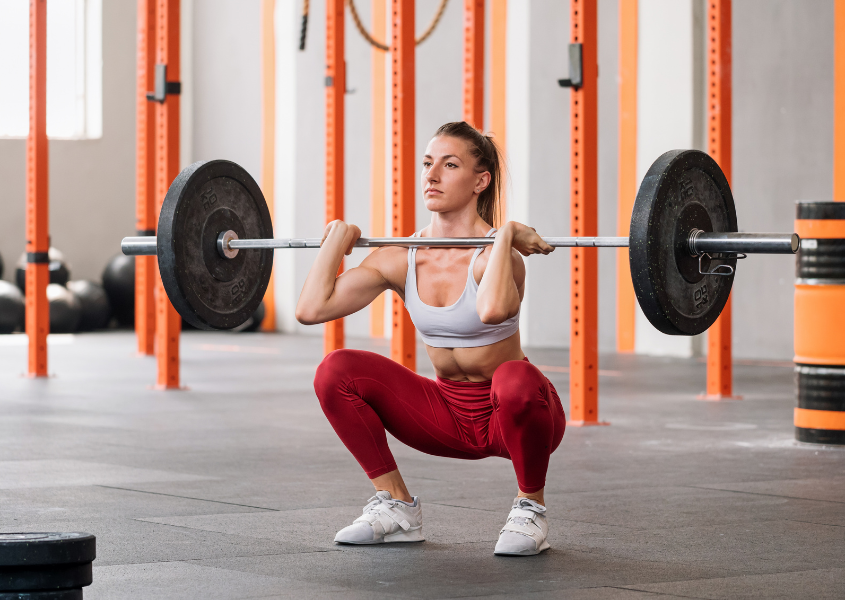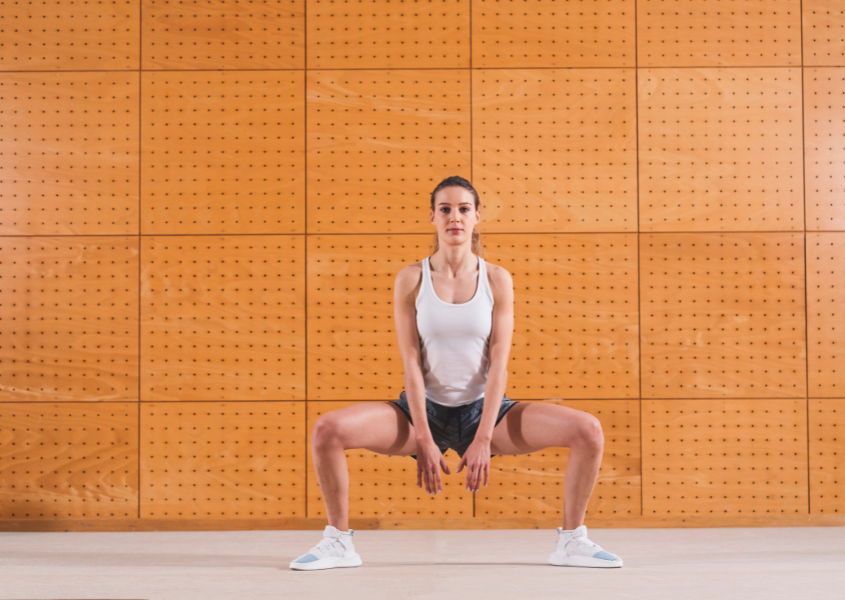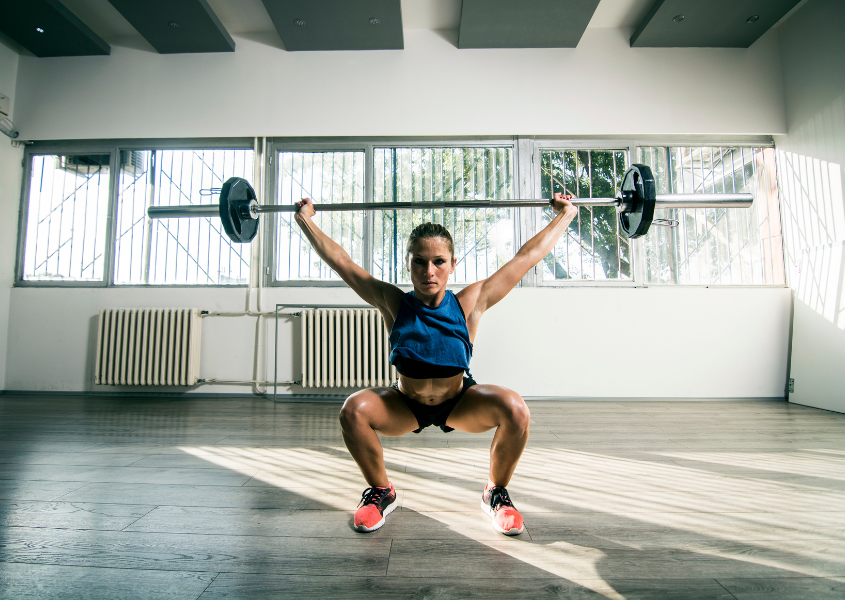


Ready to level up your lower body strength? Dive into kneeling squats—a versatile exercise engaging glutes, quads, core, and more for a full-body workout. Discover how they sculpt your physique, boost stability, and elevate your fitness journey. Let’s explore the wonders of kneeling squats together!
Key Takeaways
- Kneeling squats primarily target the glutes and quads, working them as the main muscle groups during the exercise.
- The hamstrings, lower back, and core act as secondary muscles in kneeling squats, providing stability and support throughout the movement.
- Kneeling squats can engage upper body muscles like shoulders, back, and arms for additional support and control.
- To effectively perform kneeling squats, it’s crucial to focus on proper form over repetitions.
- Kneeling squats strengthen lower body muscles, improve balance and coordination, provide leg training variation, aid in hip mobility, and enhance core stability.
What Muscles Does Kneeling Squat Work?

The kneeling squat focuses on glute strength and quads as the main muscle groups worked. The hamstrings, lower back, and core act as secondary muscles worked to provide stability and support during the exercise. If the kneeling squat is performed with a barbell, it can further engage the upper body with muscles worked such as the shoulders, back, and arms for additional support and control.
Glutes (Gluteal Muscles): The primary muscles targeted in kneeling squats are the gluteal muscles, including the gluteus maximus, medius, and minimus. These muscles play a significant role in the proper hip extension to upright from squat position and, assisting in the movement of the hips when standing up from the kneeling squat position.
Quadriceps (Front Thigh Muscles): The quadriceps muscles, located on the front of the thigh, are also primary movers during kneeling squats. They work to extend the knee joint as you squat your knees and rise from the kneeling squat position.
Hamstrings (Posterior Thigh Muscles): While not the main focus, the hamstrings act as secondary muscles in kneeling squats to assist in knee flexion and hip flexion, and provide stability throughout the exercise.
Lower Back: The muscles of the lower back, including the erector spinae, help stabilize the spine and support the torso in proper posture during the kneeling position and squats.
Core: The core muscles, including the abdominals, obliques, and transverse abdominis, are engaged to maintain stability and protect the spine during the movement.
By incorporating kneeling squats into your workout routine with or without additional equipment like a barbell, you can effectively target these muscle groups to improve lower body strength, stability, and overall functional fitness.
How To Perform the Kneeling Squat Effectively?
For added comfort and support while performing traditional squats, it is advisable to place an exercise mat or yoga mat on the ground before lowering into the squat position. To perform a kneeling squat effectively performed a kneeling squat correctly, follow these steps:
- Start by kneeling on a soft surface with your knees hip-width apart and your toes pointed slightly outward.
- Engage your core muscles to stabilize your body.
- Slowly lower your body towards the ground by bending your knees and keeping your back straight.
- Aim to lower yourself until your thighs are parallel to the ground or as far down as is comfortable for you.
- Push through your heels and return to the starting position by straightening your legs.
- Repeat for the desired number of repetitions.
It’s important to focus on proper form to prevent injury and maximize the effectiveness of the exercise. Remember to breathe steadily throughout the movement and listen to your body to avoid pushing yourself too far beyond your limits. Start with a few repetitions and gradually increase as you build strength and endurance.
Sets And Reps
When incorporating kneeling squats into your workout routine, the number of sets and reps can vary depending on your fitness goals, experience level, and overall workout structure. Here are some general guidelines you can consider:
Beginner:
Sets: 1-2 sets
Repetitions: 8-10 repetitions per set
For beginners, it’s important to focus on establishing proper form and building a foundation of strength. Starting with 1-2 sets of 8-10 repetitions allows you to practice the exercise correctly and gradually increase strength and endurance.
Advanced:
Sets: 3 sets
Repetitions: 15-20 repetitions per set
As you progress and your strength improves, you can advance to 3 sets of 15-20 repetitions. This higher volume helps to further challenge your muscles and promote muscular endurance.
Progression:
Progressive Overload: Increase the number of sets and reps over time as you become stronger. Gradually work towards being able to perform 3 sets of 15-20 repetitions.
Adding Weight: Start with body weight to master the movement pattern and then gradually add light amounts of weight as needed to continue challenging your muscles.
It is crucial to pay attention to your body’s signals and modify the number of sets and repetitions according to your personal fitness level and objectives. If you feel comfortable with the current sets and reps, gradually increase the intensity to keep progressing in your fitness journey.
Benefits of Kneeling Squat
Kneeling squats offer several benefits for individuals looking to improve their lower body strength, stability, and overall fitness. Some of the key benefits of kneeling squats include:
Strengthens Lower Body Muscles
Kneeling squats target muscles such as the glutes, quads, hamstrings, and calves, helping to strengthen and tone these muscle groups. This can lead to improved power, endurance, and functional strength in daily activities and sports.
Enhances Core Stability
By engaging the core muscles during the kneeling position and squats to maintain proper posture and stability, this exercise can help strengthen the abdominals, obliques, and lower back muscles, leading to improved core strength and stability.
Improves Balance and Coordination
Kneeling squats require balance and coordination to perform the movement effectively. Regularly incorporating this exercise into your routine can help enhance these aspects of athletic performance, which are essential for overall functional fitness and injury prevention.
Assists in Hip Mobility
The movement of a kneeling position and squats can also help improve hip mobility and flexibility by working through a full range of motion. This can be beneficial for individuals looking to enhance their overall joint health and range of motion.
Scalable Exercise
Kneeling squats can be modified by adjusting the depth of the movement, adding resistance with a barbell or dumbbell, or incorporating variations like pulses, resistance bands, or tempo changes. This scalability allows individuals to tailor the exercise to their fitness level and goals.
As with any exercise, it’s essential to perform kneeling squats with proper form and technique to maximize the benefits and reduce the risk of injury. Always opt for a modification if it is too strenuous. Don’t overdo it!
Squat Variations
If you find that the kneeling squat exercise may be uncomfortable or it puts a lot of pressure on your knees, here are some other squat variations of the kneeling squat exercise:
Front Squat

The front squat is a variation of the traditional squat where the barbell is positioned in front of the torso, held upright over the shoulders. This challenges the quads, core, and upper back. This exercise enhances lower body strength and stability while reducing stress on the lower back.
Sumo Squat

Sumo squats involve a wider stance with toes pointed outwards, targeting the knees, inner thighs, glutes, and quads. This variation helps activate different muscle groups in the lower body and can be beneficial for individuals looking to work on hip and knee mobility and add variety to their leg workouts.
Overhead Squat

The overhead squat is a demanding exercise that boosts lower body strength, requiring excellent shoulder mobility and core stability. With a barbell or weight held overhead, it engages the entire body, including lower body muscles, core, and shoulders.
Incorporating these additional lower body exercises offers a comprehensive workout targeting various muscle groups from different angles. By blending these exercises, individuals can enhance overall lower body strength, stability, and functional fitness.
Conclusion
In conclusion, kneeling squats are a versatile exercise that targets multiple muscle groups including the glutes, quads, hamstrings, lower back, and core. If you want a great exercise that can target all of the major muscle groups at once, you should consider adding this to your workout routine!
Are kneeling squats better than squats?
Do kneeling squats work abs?
How many squats a day is sufficient?
Stephanie Zaban. (2022). Exercise Tutorial: Kneeling Squat. Available at: https://www.yourhousefitness.com/blog/exercise-tutorial-kneeling-squat [Accessed 28 Mar 2024].
Garett Reid. (2023). Kneeling squat: How to, Muscles Worked, Benefits, & Alternatives. Available at: https://www.setforset.com/blogs/news/kneeling-squat [Accessed 28 Mar 2024].
STEEL. (2022). How to do Kneeling squats (Form & Benefits). Available at: https://steelsupplements.com/blogs/steel-blog/how-to-do-kneeling-squats-form-benefits [Accessed 28 Mar 2024].





